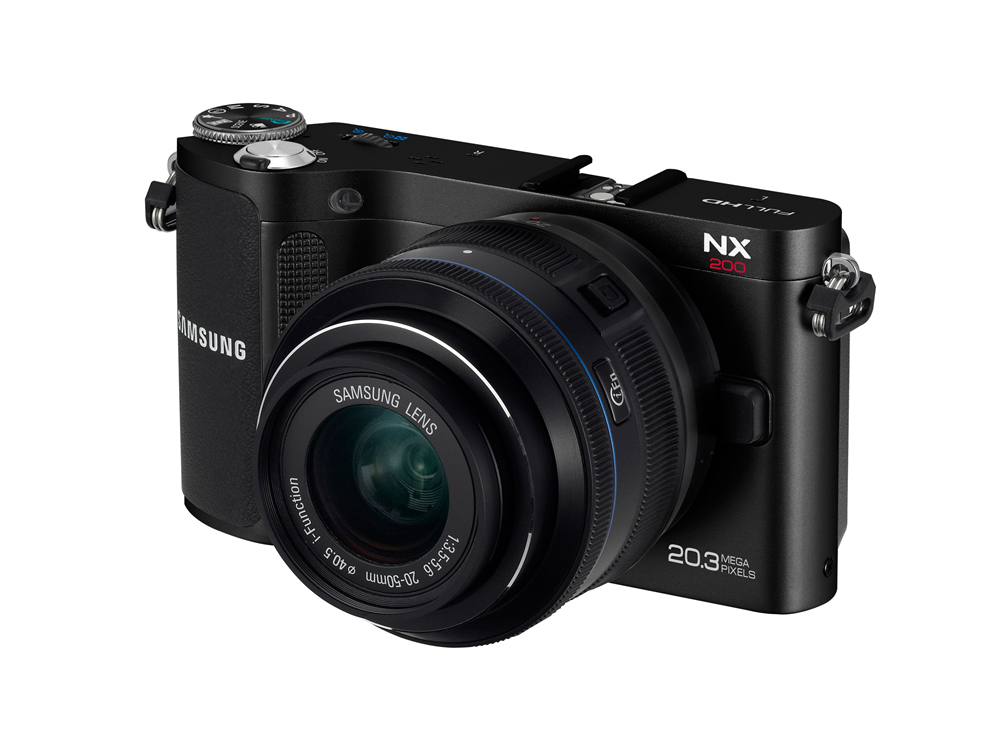Why you can trust TechRadar
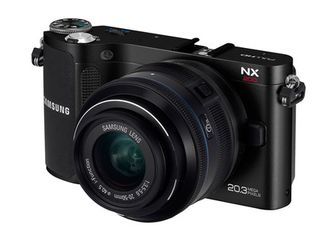
Comparing the Samsung NX200 to the older model it replaces, the external differences are notable. The Samsung NX200 is more compact than its forebear and has managed to shed just over 60g of weight through its re-design. For the new model Samsung has chosen to stick with the retro rangefinder-esque styling that the NX100 sported - and has proven to be popular in the CSC category - but taken steps to hone the new model into something with greater aesthetic appeal than its ancestor.
Dispensing with the plastic finish that we saw on the NX100, the sleek new replacement benefits from a stylish, curvaceous all-metal body that lends a robust feel to the camera. The smooth lines and somewhat slippery finish of the Samsung NX100 have been replaced by a chunkier textured front grip and rear thumb pad that improves the ergonomics of the latest NX model by comparison and provides a much more secure hold on the slim body.
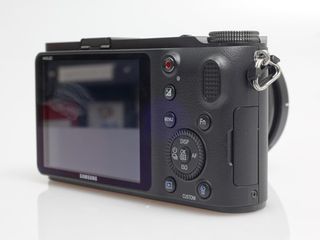
The Samsung NX200 possesses slightly chunkier dimensions than many of its rivals, a move that Samsung states was a conscious decision in order to offer a hint of the larger-than-average sensor that the camera sports. While you might not be able to slip the Samsung NX200 into a pocket, its slightly more generous proportions mean that there's plenty of space for useful dedicated controls on the body.
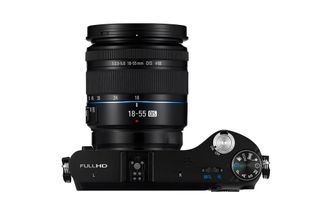
The curvy front panel is clean and stylish, with just a lens release button and a smattering of silver and red logos punctuating the matt black finish. The camera is relatively thin at one end, with the other widening into the previously mentioned grip in a sweeping curve.
The top panel is similarly uncluttered, with a well-stocked mode dial on the right-hand edge offering access to the camera's Smart Auto mode, plus its HD movie, Scene, Panorama, and Magic modes.
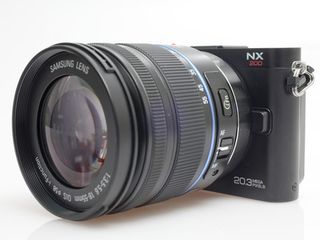
There's also a Lens Priority mode that makes good use of Samsung's revamped i-Function lenses, which feature a button mounted on the lens barrel that lets you select from a bank of scene modes and zoom in using the control dial or the focus ring on the lens. It's a way of working that takes a little getting used to, but once you're acquainted with how it all works it does offer a novel - and speedy - alternative method of operating the camera.
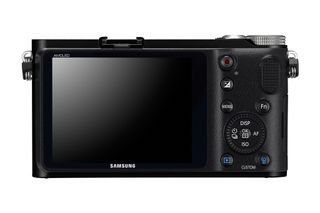
The scene modes on offer cover a wide range of photographic scenarios, including a skin-softening Beauty Shot option, plus Night, Landscape, Sports and Children, to name a few. There's also a 3D setting for generating three-dimensional images for viewing on a compatible monitor or TV.
For more advanced photographers there's the full set of Program AE, Aperture-priority, Shutter-priority and Manual (PSAM) exposure modes, offering a greater level of control over camera settings.
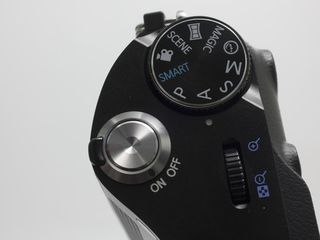
The silver shutter button is encircled by a small power switch and there's a control dial that doubles as a zoom control in playback. Otherwise, there's just a metal hotshoe, speaker and stereo microphones, with the remainder of the controls being situated on the back of the camera.
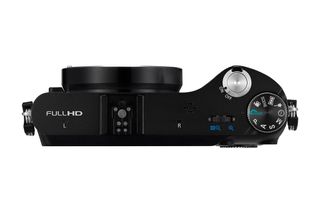
The back panel is largely dominated by the Samsung NX200's 3-inch, 614,000-dot AMOLED screen - the same as we saw on its ancestor. The display is clear, bright and offers a wide viewing angle, compensating for the fact that it's fixed, rather than offering an articulated version as seen on some of its rivals.
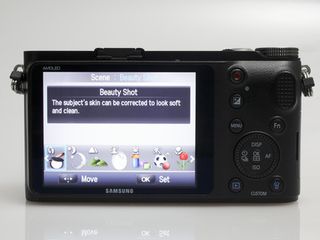
The display's anti-reflective coating, however, could do with some improvement: trying to shoot with the screen on a bright day left us really missing the option of a viewfinder.
There's a handy one-touch button for fast access to the camera's HD movie mode, a dedicated exposure compensation button, plus Menu, Playback and Delete buttons.
There's a further Fn (Function) button, which calls up a graphical display on the screen with a range of options for you to tweak. The interactive icons relate to functions such as the drive mode, shutter speed, aperture and metering, for example, with the number available expanding or contracting according to the complexity of the exposure mode you have selected at the time.
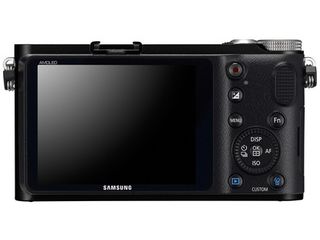
The four-way navigation pad incorporates a scrolling outer edge for quick scrolling through options and settings, plus the directional keys provide softkey access to the camera's display options (including a live histogram and either a full or restricted array of shooting information), AF mode, ISO and Drive mode. The central OK button also enables you to manually position the focus point, making it easier to perfect off-centre compositions.
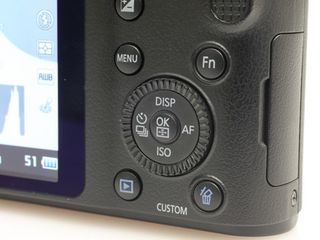
Overall, the Samsung NX200 handles very nicely indeed. The user-friendly range of controls on offer is pretty comprehensive, and the camera offers several ways of accessing and operating various features, so you can develop your own way of working according to your personal preferences.
